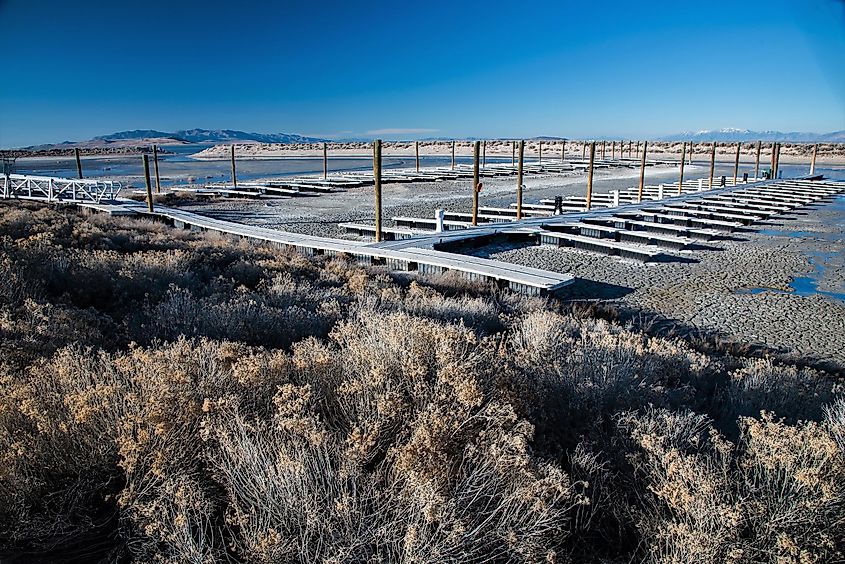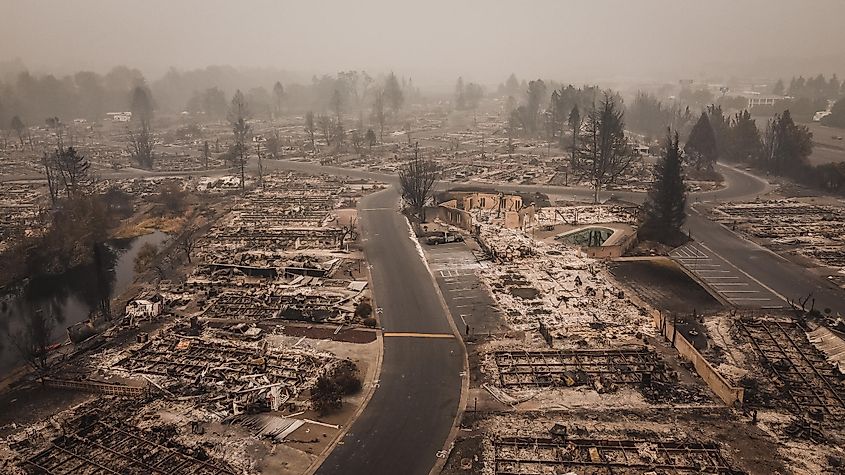At the end of January 2023, 33% of the land in Canada, 52% in the United States, and 82% in Mexico were under “abnormally dry” or some stage of drought conditions. A look at the statistics over the past 20-plus years shows a noticeable increase in drought conditions. But you do not have to rely solely on statistics to know that there is a problem. It is clear that numerous lakes, rivers, and other bodies of water across North America are shrinking or drying up completely. For example, the Great Salt Lake in Utah, the largest saltwater lake on Earth, is now only one-third of its size in the late 1840s. The Elephant Butte Reservoir, the largest reservoir in New Mexico, dropped to less than 4% of its total capacity. Researchers in British Columbia found a mass of some 65,000 dead salmon trapped while trying to spawn in a dried-up creek that feeds into the Neekus River. Last year, the western United States and northern Mexico continued through what is believed to be the driest 20-year period in at least 1,200 years.
What are the causes of such extreme events? What are the impacts? It is important to address questions like these to develop possible solutions to the drought problem.
Causes

Generally speaking, many bodies of water in North America (and worldwide, for that matter) are shrinking for two main reasons. The first is reduced precipitation, including rainfall as well as snowfall in mountains that feed waterways, in many areas. The second is rapidly increasing water usage for agriculture and other needs of the growing human population. While regions of Earth and the Earth as a whole go through natural cycles of wetter and drier conditions, it is increasingly obvious that human-induced climate change is intensifying droughts. So, essentially, human activity reduces the amount of water available while at the same time increasing the demand for water. Therefore, any potential solutions must deal with both these main aspects of the problem.
Impacts On Humans

Low river levels can bring commerce to a halt, such as river barges getting stuck on the Mississippi River. Also, when the water flow that feeds human-made reservoirs drops, reservoir levels can fall so low that hydroelectric dams can no longer reliably produce electricity. Low water levels also make it increasingly difficult to provide enough water for both agriculture and the populations of towns and cities in drought-stricken areas. For example, residents of cities in northern Mexico, such as Monterey, often go without municipal water supplies for days at a time and have to resort to filling buckets and trash cans at water trucks when available. Over the longer term, some populated areas of North America may become essentially uninhabitable.
Impacts On Animals

Impacts On The Environment

No part of the environment escapes unaffected by an extended period of drought. Wildfires can become more frequent as the landscape dries out. Native plant species may be unable to adjust to the drier conditions and die out. Local weather patterns can change due to the reduced evaporation from smaller bodies of water. Marshes, swamps, and other wetlands may shrink or even disappear. Soil exposed by shrinking lakes and rivers can release harmful contaminants left behind by human activity. Tons of river silt may collect in shrinking reservoirs and eventually block dam spillways, leading, somewhat ironically, to flooding. In fact, drought conditions often make flooding worse when heavy rains come since the earth is too parched to soak up the water.
It is clear that, even though droughts are a normal occurrence in North America, overall drought conditions are worsening over time. Bodies of water are drying up in ways not seen. Human activities, namely increased water consumption and human-induced climate change, are key causes of this situation. Therefore, it will take human-made solutions—such as better water management and climate protection measures—to tackle the challenge affecting people, animals, and the environment as a whole.
Source : Worldatlas
